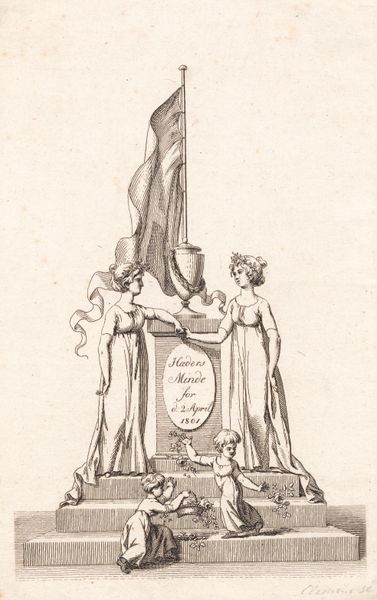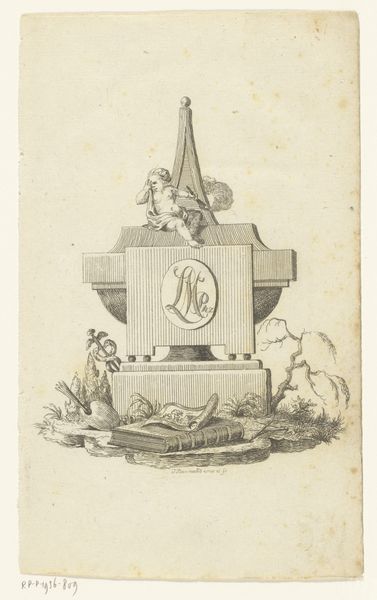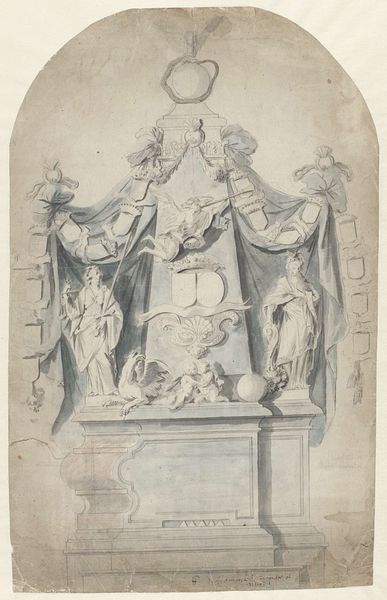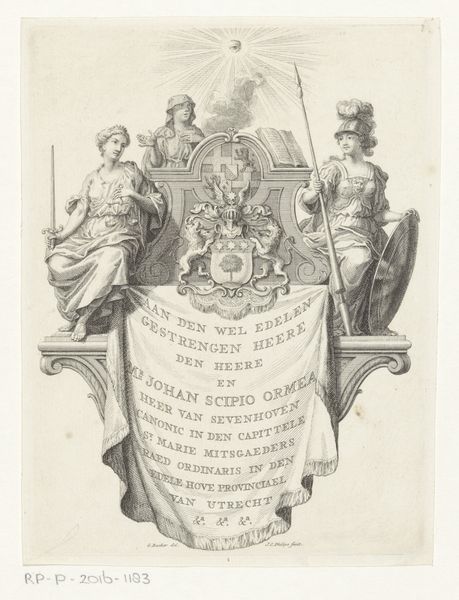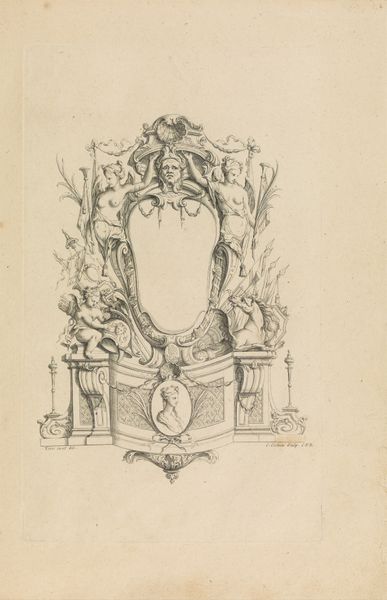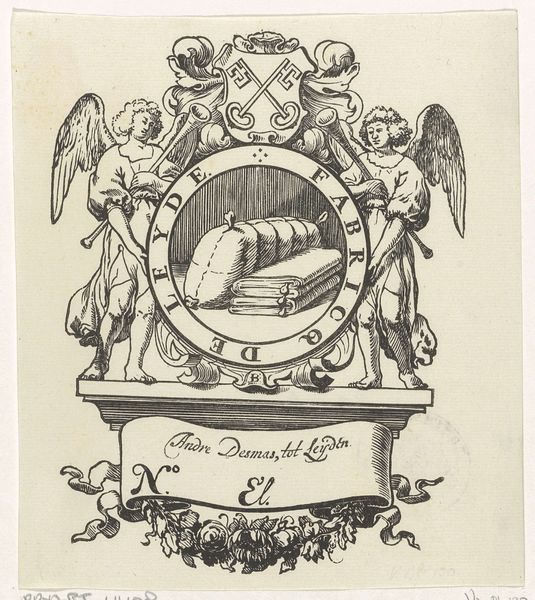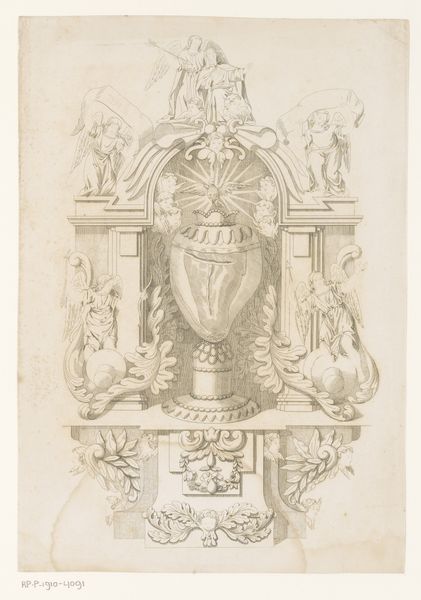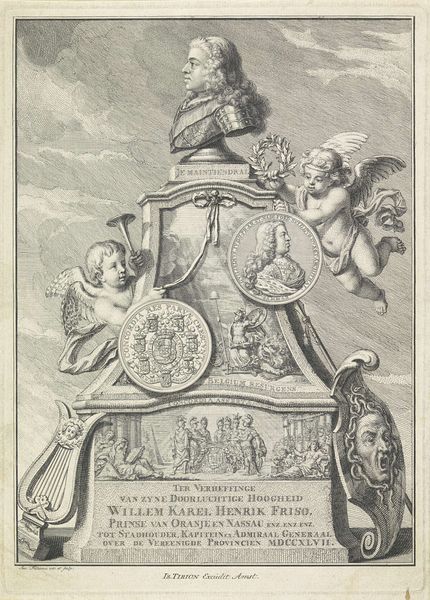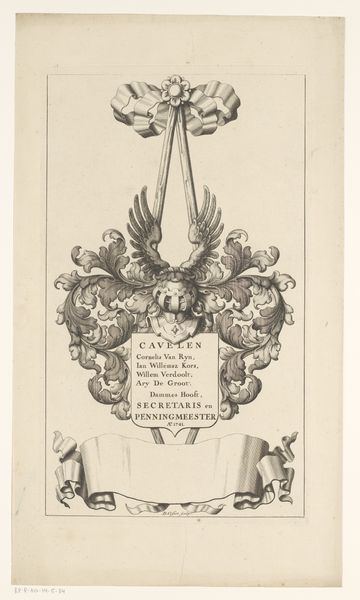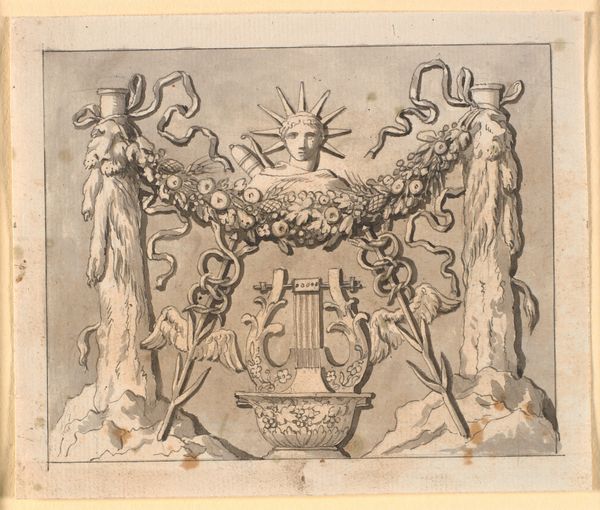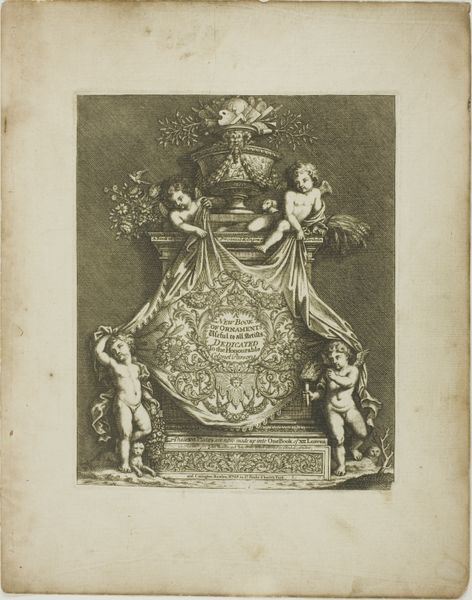
print, etching
#
neoclacissism
#
allegory
# print
#
etching
#
landscape
#
figuration
#
line
#
history-painting
Dimensions: 218 mm (height) x 142 mm (width) (bladmaal), 199 mm (height) x 122 mm (width) (plademaal)
Curator: Here we have J.F. Clemens’ “Hæders Minde for d. 2 April 1801,” an etching that appears to have been completed sometime between 1748 and 1831. Editor: Immediately, I'm struck by its serene stillness. The scene almost feels like a delicate dream. There is this profound sense of loss, maybe it's all the monochromatic line work? Curator: Indeed, the emphasis on line contributes significantly to the overall effect. Notice how Clemens employs varied densities to define form and shadow, achieving depth despite the print's inherently flat nature. Observe, also, the carefully constructed composition with the allegorical figures flanking the central monument. Editor: The monument feels rigid, stoic almost. It’s flanked by these elegant figures, but weighed down by an elaborate flag. It makes you wonder about the event the monument is commemorating—what inspired such mixed feelings in the creator? It’s somber, but not without this neoclassical polish and grace. Curator: It commemorates the Battle of Copenhagen on April 2, 1801. The figures, rendered in neoclassical style, embody allegorical virtues relevant to the battle. The monument inscription reinforces this. Editor: Right. Now I see how this isn't just pretty picture. These figures, likely representing Liberty and Remembrance, stand guard over a pivotal, blood-soaked moment in history. I notice now the children at the base. They almost appear to be adorning the structure in memoriam, which further humanizes the historical event. Curator: Precisely, and their actions introduce a cyclical element to the narrative. We see remembrance passed down through generations. Structurally, the symmetry offers a balanced, controlled vision befitting the neoclassical style. Editor: Knowing what this image represents, I see it as more than just pretty aesthetics. It captures an elegiac quality of remembrance—even beauty emerging from moments of upheaval and discord. I wonder if we will ever evolve past that sort of violent moment into creating art that reflects peace. Curator: Clemens, through masterful execution of line and form, invites us to consider how art can act as both a record of, and a meditation on, human events and the forces that shape them.
Comments
No comments
Be the first to comment and join the conversation on the ultimate creative platform.
